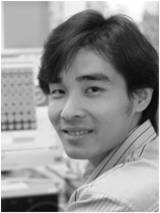News
Who will pay my pension someday...?
Information event on pension rights for Internationally Mobile Researchers.
PhD Funding through the TUM Graduate School
STIBET Program of the DAAD // Internationalization voucher of the TUM-GS
Biomedical Applications for Cancer Treatment
April 23rd, 2015 I 04.00-06.00pm I Klinikum rechts der Isar I Pavillon Lecture Hall
Events
| Mo | Tu | We | Th | Fr | Sa | Su | |
|---|---|---|---|---|---|---|---|
| 18 | 27 | 28 | 29 | 30 | 1 | 2 | 3 |
| 19 | 4 | 5 | 6 | 7 | 8 | 9 | 10 |
| 20 | 11 | 12 | 13 | 14 | 15 | 16 | 17 |
| 21 | 18 | 19 | 20 | 21 | 22 | 23 | 24 |
| 22 | 25 | 26 | 27 | 28 | 29 | 30 | 31 |
Rui Li

Full member of GSISH
Contact Details
Institut für Informatik / I12
TU München
Boltzmannstr. 3
85748 Garching
Germany
Phone: +49 (0)89.289.19436
Fax: +49 (0)89.289.19414
E-Mail: rui.li@in.tum.de
Project Details
Project:
Data Mining and Machine Learning Methods for High-dimensional Patient Data in Dementia Research: Voxel Features Mining, Subgroup Discovery and Multi-view Learning
Supervisors:
Prof. Dr. Stefan Kramer
Prof. Dr. Alexander Drzezga
Prof. Dr. Markus Schwaiger
Prof. Dr. Robert Perneczky
Start of PhD-work at GSISH:
November 2010
Project Description:
Neuroimaging techniques such as [18F]-fluoro-2-deoxy-glucose ([18F]-FDG) positron emission tomography (PET) for the assessment of cerebral glucose metabolism are widely applied in the diagnosis and research of dementing disorders such as Alzheimer´s disease (AD). The understanding of associations between basic pathomechanisms and their clinical expression as dementia is of major interest. Usually, subsets of patients are pre-defined on the basis of clinical data and correlations between clinical and neuroimaging findings are subsequently identified according to a priori hypotheses. However, important associations remain undiscovered because of these constraints. The present project therefore takes the opposite approach, starting with the imaging data to identify clusters of distinctive imaging patterns and generating subgroups of patients according to their affiliation to these clusters. Subsequently, differences and commonalities between these clusters are addressed in terms of non-imaging variables, such as demographic variables and psychometric test results. Hence, more complete descriptions of interesting subgroups will be obtained. To achieve this goal, data-mining and clustering algorithms will be applied to whole brain scans for the first time in a close collaboration of the relevant institutions.
Publications:
Li, R., Ahmadi, Z., and Kramer, S. (2014). Constrained Latent Dirichlet Allocation for Subgroup Discovery with Topic Rules, In: ECAI 2014: 21st European Conference on Artificial Intelligence, IOS Press.
Li, R., Perneczky, R., Drzezga, A., and Kramer, S. (2013). Efficient Redundancy Reduced Subgroup Discovery via Quadratic Programming Journal of Intelligent Information Systems, Springer, accepted; invited as one of the best Discovery Science 2012 papers.
Li, R and Kramer, S (2012). "Efficient Redundancy Reduced Subgroup Discovery via Quadratic Programming" In: The 15th International Conference on Discovery Science, pp. 125–138, Berlin, Heidelberg, Springer-Verlag. LNAI.
Li, R, Hapfelmeier, A, Schmidt, J, Perneczky, R, Drzezga, A, Kurz, A, and Kramer, S (2011). "A case study of stacked multi-view learning in dementia research" In: Proceedings of the 13th Conference on Artificial Intelligence in Medicine, pp. 60–69, Berlin, Heidelberg, Springer-Verlag. LNCS.
Personal Details:
06/2010 - 10/2010:
Research assistant at Rostlab (advised by Dr. Marco Punta and Prof. Dr. Burkhard Rost).
10/2009 - 05/2010:
Ph.D student at Institut fuer Informatik / I12 (Bioinformatics), TUM (advised by Prof. Dr. Stefan Kramer).
10/2007 - 09/2009:
Research assistant at Discrete Systems Group of Hochschule Ostwestfalen-Lippe - University of Applied Sciences
also affiliated with Institute of Industrial Information Technologies, Lemgo, Germany (advised by Prof. Dr. Volker Lohweg)
08/2005 - 08/2007:
M. Sc. study at Hochschule Ostwestfalen-Lippe - University of Applied Sciences, Germany
During Master study, he was also an exchange student at Halmstad University (Sweden) and Aalborg University (Denmark) for a year.
